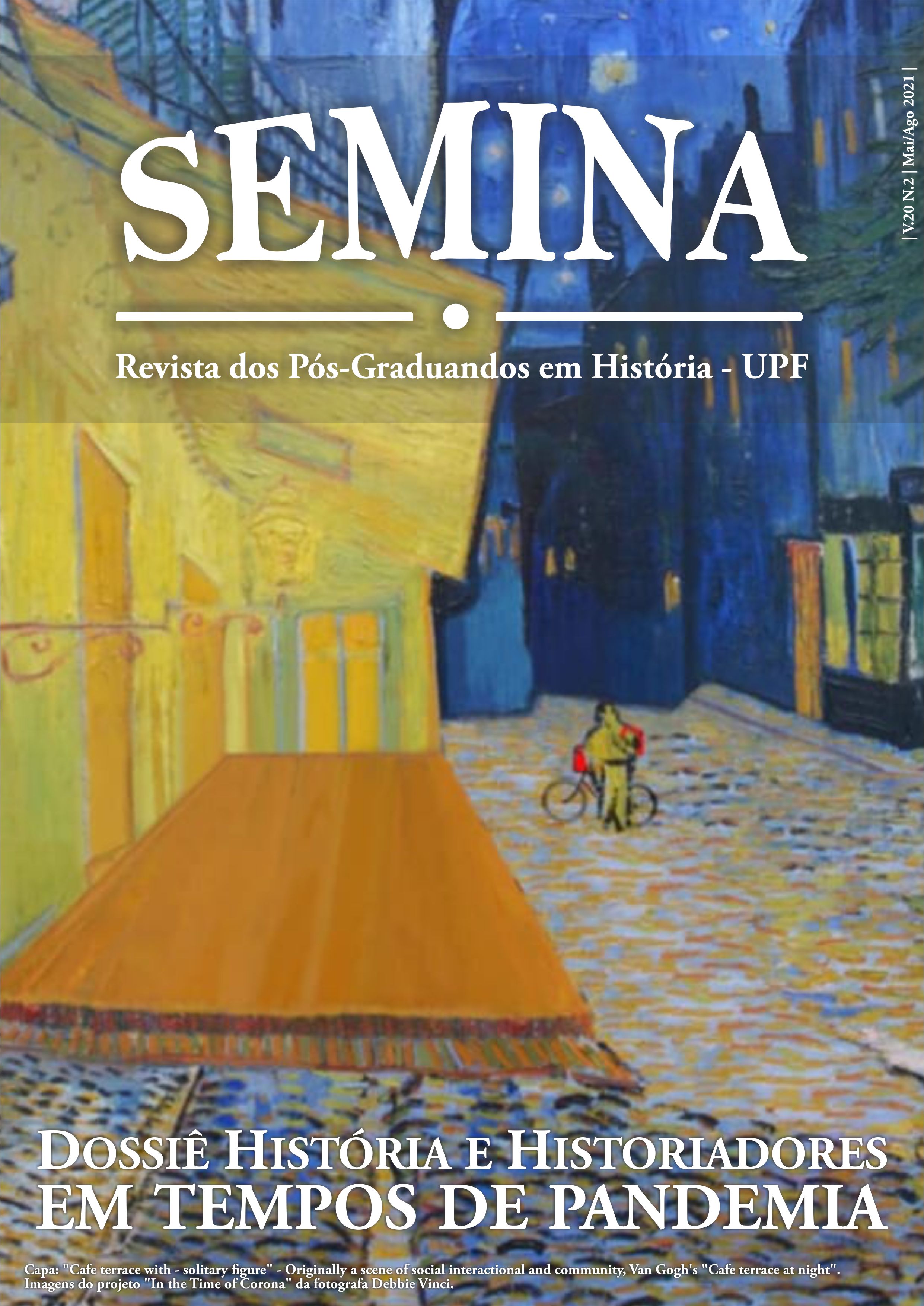Research, panic and pandemic
the internet as an exclusive foundation of the current state of art
DOI:
https://doi.org/10.5335/srph.v20i2.12325Keywords:
Internet, COVID-19 pandemic, Scientific researchAbstract
In 2020, the Academic Master in Social History of the Postgraduate Program in History at the History Institute of the Federal University of Uberlândia (PPGHI / INHIS / UFU) began, having as one of the objectives of the academic year the realization, by the students , of the Current State of the Art; however, in March, Brazil faced an extraordinary condition: the COVID-19 Pandemic. Due to social isolation, archives and libraries was closed. Consider that research activities are unable to stop: it’s possible to carry out them entirely, exclusively, through the internet? This article will answer that question, addressing the themes of overproduction, digitization and search engines (highlighting Google Scholar), concluding that: yes, it is possible to search in pandemic times; but, "new" places, "new" problems.
Downloads
References
FICO, Carlos. História que temos vivido. In: VARELLA, Flávia. Et. All. Tempo presente & usos do passado. 1ed. Rio de Janeiro: FGV, 2012, v. 1, p. 31-49.
FORTE, Bárbara. Por que o Brasil é o sétimo país mais desigual do mundo?. 2020. Disponível em: https://www.uol.com.br/ecoa/ultimas-noticias/2020/02/20/por-que-brasil-e-o-setimo-pais-mais-desigual-do-mundo.htm. Acesso em: 26/11/2020.
GALVANI, Giovanna. Governo Bolsonaro corta mais de 5.600 novas bolsas da Capes. Disponível em: https://www.cartacapital.com.br/educacao/governo-bolsonaro-corta-mais-de-5-600-novas-bolsas-da-capes/. Acesso em: 24/09/2020.
HARTOG, François. Introdução – ordens do tempo, regimes de historicidade. In: ______. Regimes de historicidade: presentismo e experiência do tempo. Belo Horizonte: Autêntica, 2013, p. 17-41.
HOUAISS, Antônio. Dicionário eletrônico Houaiss da Língua Portuguesa. São Paulo: Objetiva, 2009.
MUGNAINI, Rogério; STREHL, Letícia. Recuperação e impacto da produção científica na era Google: uma análise comparativa entre o Google Acadêmico e a Web of Science. Encontros Bibli: revista eletrônica de biblioteconomia e ciência da informação, p. 92-105, 2008.
O QUE É: buscador. 2008. Disponível em: http://g1.globo.com/Noticias/0,,MUL394725-15524,00.html. Acesso em: 24/09/2020.
PATRIOTA, Rosangela. Vianinha: um dramaturgo no coração de seu tempo. São Paulo: Editora Hucitec, 1999.
POZZEBOM, Rafaela. Diferença entre busca vertical e busca horizontal. 2011. Disponível em:https://www.oficinadanet.com.br/artigo/otimizacao__seo/diferenca_entre_busca_vertical_e_busca_horizontal. Acesso em: 24/09/2020.
VALENTE, Jonas. Brasil tem 134 milhões de usuários de internet, aponta pesquisa – a maioria acessa a internet pelo celular. 2020. Disponível em: https://agenciabrasil.ebc.com.br/geral/noticia/2020-05/brasil-tem-134-milhoes-de-usuarios-de-internet-aponta-pesquisa. Acesso em: 24/09/2020.
VOCÊ conhece todas as funcionalidades do Scanner? 2017. Disponível em: https://www.acervonet.com.br/blog/voce-conhece-todas-as-funcionalidades-do-scanner. Acesso em: 24/09/2020.
XAVIER, Andressa. Saiba procurar no Google da melhor forma. 2008. Disponível em: https://www.tecmundo.com.br/aumentar-desempenho/23-saiba-procurar-no-google-da-melhor-forma.htm. Acesso em: 24/09/2020.
Downloads
Published
Issue
Section
License
Autores que publicam nesta revista concordam com os seguintes termos:
- Autores mantêm os direitos autorais e concedem à revista o direito de primeira publicação, com o trabalho simultaneamente licenciado sob a Licença Creative Commons Atribuição 4.0 Internacional – CC-BY que permitindo o compartilhamento do trabalho com reconhecimento da autoria do trabalho e publicação inicial nesta revista.
- Autores têm autorização para assumir contratos adicionais separadamente, para distribuição não-exclusiva da versão do trabalho publicada nesta revista (ex.: publicar em repositório institucional ou como capítulo de livro), com reconhecimento de autoria e publicação inicial nesta revista.
- Autores têm permissão e são estimulados a publicar e distribuir seu trabalho online (ex.: em repositórios institucionais ou na sua página pessoal), a qualquer ponto antes ou durante o processo editorial, já que isso pode gerar alterações produtivas, bem como aumentar o impacto e a citação do trabalho publicado, de acordo ainda com a democratização científica prevista pela Ciência Aberta.





